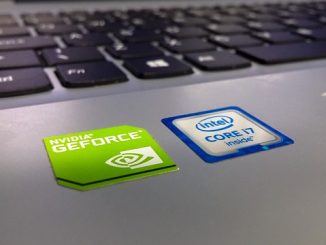- Nvidia‘s (NVDA) stock fell 3.50% to $98.27 in premarket trading on Friday, after a 7.81% drop the previous day, reflecting broader unease in the semiconductor sector despite a White House decision to exclude chips from 32% tariffs on Taiwan.
- Other chipmakers like AMD, Qualcomm, and Broadcom also declined in premarket trading, while Dell Technologies dropped 5% after a 19% plunge, highlighting sector-wide volatility.
- Intel, down 4% in premarket, saw mixed reactions to a potential joint venture with TSMC, which would take a 20% stake, as the industry grapples with trade policy impacts and supply chain concerns.

Nvidia (NVDA), the titan of artificial-intelligence chip manufacturing, saw its stock plummet to $98.27 in premarket trading on Friday, a decline of 3.50%, slipping beneath the psychologically significant $100 threshold. This drop follows a bruising Thursday session where the stock shed 7.81%, closing at $101.80—marking its steepest single-day fall since March 3 and dragging it to levels not seen since last summer. Back then, the market fretted over potential delays in the deployment of Nvidia’s cutting-edge Blackwell hardware, a concern that has since faded but left a lingering shadow. Today, the company’s chips, predominantly forged in Taiwan’s high-tech foundries, remain central to its dominance in the AI race, yet the stock’s trajectory suggests broader unease rippling through the semiconductor sector.
The White House’s recent clarification that Taiwan would be spared from 32% tariffs on chips offered little solace to investors. Nvidia’s slide coincided with a sector-wide retreat, as peers like Advanced Micro Devices (AMD), Qualcomm (QCOM), and Broadcom (AVGO) also stumbled in premarket action – AMD down 4.26%, Qualcomm off 4.37%, and Broadcom shedding 4.30%. These declines hint at a collective shudder among chipmakers, despite the tariff reprieve, pointing to deeper market currents at play. Nvidia’s role as a bellwether amplifies the significance of its downturn; its chips power everything from data centers to autonomous systems, making its performance a barometer for the AI-driven tech economy.
Elsewhere in the industry, Dell Technologies (DELL), a heavyweight in personal computing, saw its stock dip 5.1% in premarket trading after a punishing 19% collapse on Thursday to $77.23, rendering it the S&P 500’s (^GSPC) weakest link that day. Morgan Stanley (MS) analysts didn’t mince words, labeling the looming tariffs on IT hardware makers as “calamitous,” a sentiment that seems to echo across the sector. Intel (INTC), meanwhile, offered a mixed narrative—its stock fell more than 4% in premarket trading despite earlier gains sparked by a report from The Information. The report detailed a tentative deal with Taiwan Semiconductor Manufacturing Company (TSM), where TSMC would snag a 20% stake in a new joint venture to run Intel’s chipmaking operations, with Intel and other U.S. firms retaining the lion’s share. This partnership could bolster Intel’s manufacturing muscle, long a point of vulnerability as it lags TSMC in process technology.
The broader context here is a semiconductor industry at a crossroads. Nvidia’s dominance in AI chips has fueled its meteoric rise in recent years, but the current sell-off suggests investors are grappling with uncertainties—be it macroeconomic pressures, supply chain jitters, or the specter of shifting trade policies. The 7.81% drop on Thursday wasn’t an isolated event but part of a pattern of volatility that has seen the stock retreat from its highs. Similarly, AMD, Qualcomm, and Broadcom’s premarket stumbles reflect a sector-wide recalibration, even as demand for chips remains robust amid the AI boom. Dell’s 19% nosedive underscores how interconnected the tech ecosystem is, with hardware makers feeling the heat from policy headwinds that could inflate costs or disrupt supply lines.
Intel’s potential tie-up with TSMC adds another layer to the narrative. If finalized, the 20% stake for TSMC could signal a strategic pivot for Intel, which has struggled to reclaim its former glory in chip fabrication. The deal might ease some pressure, but the 4% premarket drop suggests skepticism persists. For Nvidia, the road ahead hinges on its ability to navigate these choppy waters while keeping its Blackwell rollout on track—a task made trickier by the market’s current mood. In an industry defined by both innovation and volatility, the semiconductor sector remains a high-stakes arena, with Nvidia’s $98.27 premarket price serving as a stark reminder that even industry giants are vulnerable when the ground beneath them shifts.
WallStreetPit does not provide investment advice. All rights reserved.





Leave a Reply